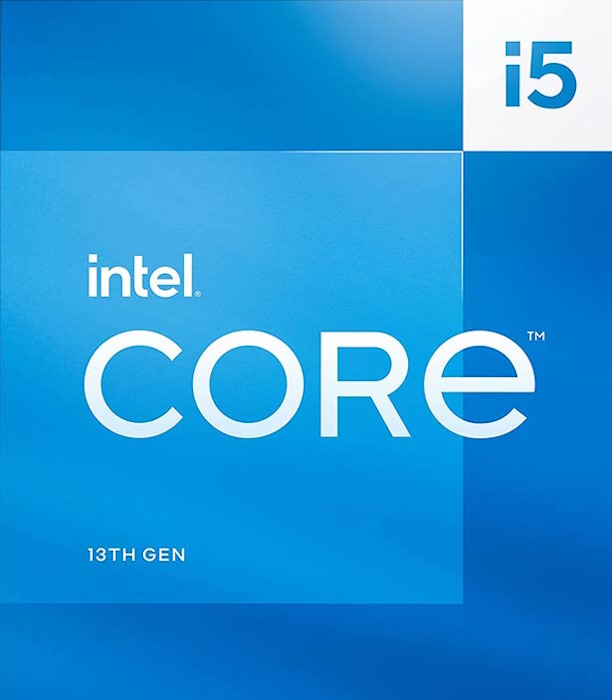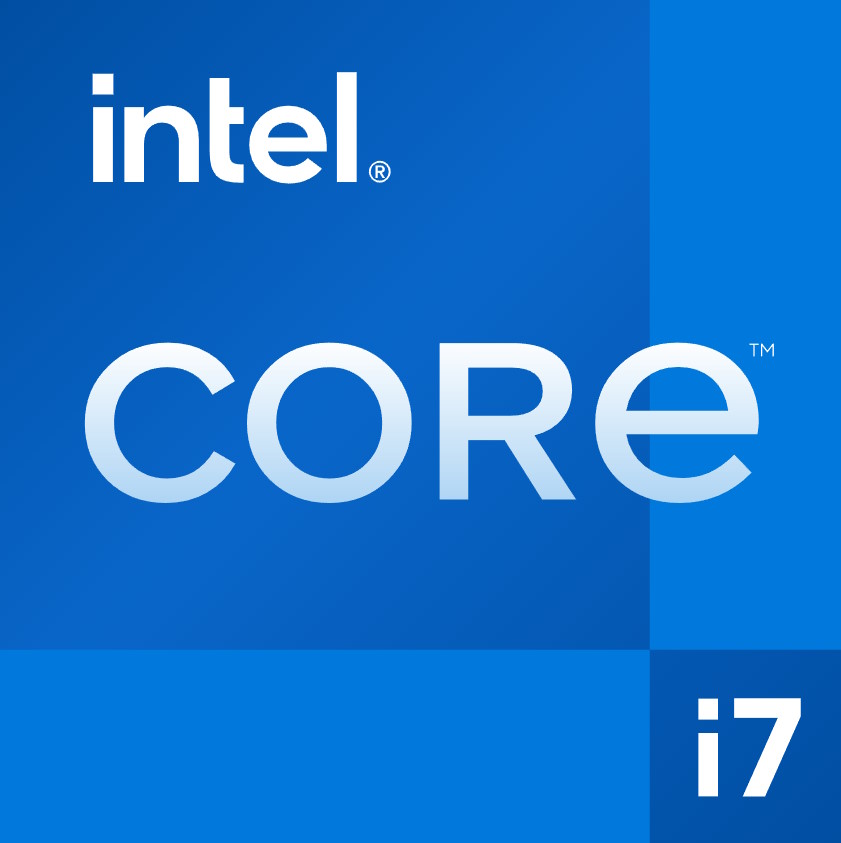Best Gaming Processors for 2024

In a special table you can compare selected processors head to head. Follow the link to find the entire catalog of processors for your own selection.

| Artline.ua | 5 885 ₴ | To Store |
| Stylus.ua | 4 962 ₴ | To Store |
| Цифра | 4 915 ₴ | To Store |
| Openshop.ua | 5 884 ₴ | To Store |
| Denika.ua | 5 315 ₴ | To Store |
The quad-core Intel Core i3-12100 is one of the most interesting and affordable options for building an inexpensive gaming PC. It consumes little power, heats up slightly during automatic boost, and is designed to work with the Intel LGA 1700 processor socket. This is a big plus since Intel decided to extend the service life of the LGA 1700 over several generations of processors, so in 2–3 years the Core i3-12100 will be available easy to upgrade to a more productive and modern Core i5 or Core i7 13th or 14th generation.
Unlike older Core i5/i7/i9 processors from the Alder Lake family with hybrid P and E cores, the Core i3-12100 uses performance class cores. They support automatic overclocking technology and can simultaneously process two computational threads. In normal mode they operate at a frequency of 3.3 GHz, and in case of lack of computing power they can be overclocked to 4.3 GHz.
Overall, the Core i3-12100 offers perhaps the best price-performance ratio among entry-level processors, providing solid performance not only in office applications, but also allowing you to play the latest AAA project in Full HD at medium graphics settings. For example, slightly more productive analogs from the 13th and 14th generation Intel Core will cost one and a half to two times more. And rivals from the AMD camp, represented by the Ryzen 5 3600 and Ryzen 5 5600, are limited to the outdated AM4 platform and, unlike the Core i3-12100, are not able to work with DDR5 memory.

| Telemart.ua | 5 599 ₴ | To Store |
| Artline.ua | 5 499 ₴ | To Store |
| Click.ua | 5 351 ₴ | To Store |
| Stylus.ua | 5 473 ₴ | To Store |
| Цифра | 5 421 ₴ | To Store |
The Ryzen 5 5600 is an affordable six-core Zen 3 processor from the Vermeer family that supports multi-threaded processing technology, can automatically overclock from 3.5 to 4.4 GHz and supports DDR4-3200 RAM. This CPU has good thermal characteristics and does not require as much cooling as second and third generation Ryzen chips.
A couple of years ago, the Ryzen 5 5600 was the main character of all mid-class gaming builds, but with the announcement of the new AMD AM5 platform, the price of components from previous generations flew down and at the beginning of 2024, the Ryzen 5 5600, unexpectedly for itself and all viewers, dropped into the entry-level price category . As a result, we get an interesting situation when a fairly powerful 12-thread chip is sold for literally a bag of peanuts and it is quite a task to outbid such an offer.
At the time of release, the main competitor of the Ryzen 5 5600 was the more powerful six-core Core i5-12400, however, it costs on average 25% more. In fact, for the same money you can only buy an 8-thread Core i3-12100 from Intel, which is almost 2 times inferior in performance to the hero of this review. In addition, an AM4 motherboard from AMD will cost less than a similar Intel platform.

| Telemart.ua | 8 075 ₴ | To Store |
| Artline.ua | 7 799 ₴ | To Store |
| Click.ua | 7 484 ₴ | To Store |
| Stylus.ua | 7 637 ₴ | To Store |
| Цифра | 7 565 ₴ | To Store |
The Ryzen 5 7500F is the entry ticket for those wanting to experience the capabilities of the AMD AM5 platform without having to shell out for more expensive processors like the Ryzen 7 or Ryzen 9. It doesn't have integrated graphics, which is a significant difference from some alternative models, but it does boast outstanding single-core and multi-core performance. performance, as well as low power consumption, which makes it an excellent option for inexpensive AM5 builds with further expansion prospects.
The Ryzen 5 7500F is made using an advanced 5nm process technology, designed to work with DDR5 RAM with AMD EXPO auto-overclocking technology and is designed for installation in motherboards with the AMD AM5 socket, introduced in 2022. The Ryzen 5 7500 chip is based on 6 physical cores of the Zen 4 series, which operate at a nominal frequency of 3.7 GHz and, if necessary, can use a turbo boost up to 5 GHz. Thanks to the transition to the new architecture, AMD engineers were also able to increase the amount of third-level cache memory to 32 MB.
With an average price of around 200 Euros, the Ryzen 5 7500F is ahead of the previous generation Ryzen 5 processors in both single-core and multi-core loads by an average of 25 - 30%. And this difference can be increased through manual tuning, overclocking it to the level of the older Ryzen 5 7600 and Ryzen 5 7600X. The only thing is that in conjunction with the processor you will need to purchase a tower cooler of the Deepcool AG500 or Jonsbo PISA A4 level, since the processor is quite hot.

| Telemart.ua | 8 899 ₴ | To Store |
| Artline.ua | 8 520 ₴ | To Store |
| Openshop.ua | 8 590 ₴ | To Store |
| Stylus.ua | 8 318 ₴ | To Store |
| Цифра | 8 240 ₴ | To Store |
Intel Core i5-13400F is a universal processor for a gaming or professional work computer. It has six powerful cores of the Raptor Lake architecture, each of which is divided into two virtual Hyper-Threading threads, and four additional energy-efficient Gracemont cores. Together we get 16 threads, which is more than the previous 12400F and the competing Ryzen 5 7600.
The intelligent Intel Thread Director scheduler balances different applications across cores in real time. Complex tasks, such as a web browser, a game or a video editor, are processed by powerful cores. And relatively simple ones, such as antivirus, audio player and instant messengers, use energy-efficient kernels.
Turbo Boost technology automatically overclocks the processor to 4.6 GHz, after which heat dissipation increases from 65 to 148 W. The small bundled Intel Laminar cooler will no longer cope; you need an air tower or dropsy. The F index means the absence of an integrated video card, but a high-performance PC will still necessarily have a discrete one.

| Telemart.ua | 19 899 ₴ | To Store |
| Click.ua | 18 991 ₴ | To Store |
| Sokol.ua | 20 164 ₴ | To Store |
| Openshop.ua | 18 737 ₴ | To Store |
| Stylus.ua | 19 974 ₴ | To Store |
Most experts agree that the 14th generation of Intel Core processors turned out to be walking in place. Compared to the 13th generation chips, their clock speeds have increased slightly... and that's all. However, in this uninteresting company there is still a black sheep in the person of the Core i7 14700K processor. In his case, Intel engineers did some serious work, increasing the number of cores and threads to 20 and 28, respectively. For comparison, the predecessor Core i7-13700K had 16 cores and 24 threads, and the maximum clock speed of the P-cores reached 5.4 GHz. For comparison, the new product can accelerate to 5.6 GHz.
In general, the performance characteristics here are such that comparisons arise not so much with previous generations of Core i7, but with the flagship chips of the Core i9 series. For example, working in conjunction with the GeForce RTX 4080, the hero of this review provides performance virtually at the level of the Core i9-14900K! The difference in power is 2 - 3%, despite the fact that the official price of the Core i7-13700K is almost $200 lower than that of the Core i9-14900K.
The existence of processors like the Core i7-14700K calls into question the idea of buying the flagship Core i9 and Ryzen 9 processors, especially when it comes to gaming PCs with 2K and 4K monitors. The difference in performance between them is slowly shrinking, while paired with a Core i7 you can use a simpler motherboard and a much less bulky cooling system. But the power supply will need to be quite powerful, since the power consumption here is approximately at the level of the Core i9-14900K.

| Telemart.ua | 16 899 ₴ | To Store |
| Artline.ua | 16 899 ₴ | To Store |
| Click.ua | 16 171 ₴ | To Store |
| Stylus.ua | 16 673 ₴ | To Store |
| Openshop.ua | 15 598 ₴ | To Store |
The Ryzen 7800X3D, part of AMD's "Raphael" family, is part of their Ryzen 7000 series processors based on the Zen 4 architecture. It features eight cores that support sixteen threads. Its base clock frequency is 4.2 GHz, and the maximum frequency in automatic overclocking mode reaches 5.0 GHz.
A key feature of the Ryzen 7000 X3D line of processors is its unique three-dimensional cache memory called 3D V-Cache. The idea of these processors is to increase the average cache memory size several times by verticalizing the memory and using an additional SRAM crystal. For example, if a regular Ryzen 7 7700 has a third-level cache capacity of 32 MB, the hero of this review has an impressive 96 MB! Processor cache plays a key role in improving performance in games and other applications due to its ability to reduce data access time.
The use of 3D cache has effectively turned the Ryzen 7 7800X3D into the best gaming processor of 2023. It's powerful, cool, energy efficient, and its gaming performance is on par with the top models from the Ryzen 9 and Intel Core i9 series. At the same time, the chip is designed to work with new generation components (AM5 socket, DDR5 memory, PCI-E 5.0 buses), allowing you to build a promising gaming PC on its base for games in 2K and 4K. At the same time, the AM5 platform is just gaining momentum and will not lose relevance in a couple of years, like the Intel LGA 1700. The only negative is mediocre performance in professional applications, so for working in Photoshop or DaVinci Resolve it is better to choose a more suitable processor.
Articles, reviews, useful tips
All materials

























